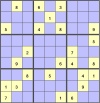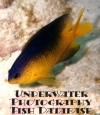Menu

Play Sudoku

WolfBridge Freeware

Fish Database
Tobago Nov 2006 - Diving
Introduction
There are plenty of dive sites around Tobago to fill a two week holiday and as I wasn't devoting the entire holiday to diving I didn't get around all of them. The first dive was quite a shock to discover that visibility was about 50cm just beneath the surface. Apparently at certain times of the year the river Orinoco in Venezuela pours out so much dirt and nutrients that it causes a green murk for about the first ten metres down. Fortunately you can get beneath, but it's quite eery swimming in the green light that it causes. The visibility was better the further up the north coast you went (on the Caribbean side).
Most of the diving was done with R & Sea Diving, a company based in the south west of the island near Pidgeon Point. The owner, John, came and picked us up from the hotel and dropped us off again afterwards, making life very easy.
On many of the days when I wasn't diving, I headed round to a small bay at Arnos Vale.
Flying Reef and Stingray Alley
Despite the murky green ceiling, there was plenty to see down at about 15m. The green murk did cause quite a drastic colour caste on many of the photographs we took, but it was useful practise with some new equipment. This was our first chance to try out a new macro lens, wide angle lens and more importantly an Epoque ES-230DS strobe. One of us carried a camera with the new strobe attached and the other tried out the macro lens. The new strobe made a big difference to the colour caste.
 |
Cottonwick |
Although the Cottonwick has been successfully lit by the strobe, it didn't reach as far as the background, which is why you can see the strange green colouration caused by the remnants of the Orinoco overhead!
The second dive of the day at Stingray Alley was in quite a fast moving current. We saw quite a few Morays and several Stingrays, but the current picked up even more as the visibility got worse and we broke off the dive a bit earlier than expected.
Mount Irvine
We dived Mount Irvine Extension first, followed by The Wall. There was far better visibility on these dives but there was quite a strong surge. We were probably being moved back and forth several metres at a time by the surge. It was a fairly shallow dive (12m or so) running alongside a wall of coral and rock outcroppings. This is where I saw my first turtle. Not only that, but we saw three turtles!
 |
Hawksbill Turtle |
As well as the turtles, there was plenty of other life, including Barred Hamlets, Golden Hamlets, Foureye Butterflyfish, Harlequin Bass and various Parrotfish.
Cove and Cove Ledge
Cove is actually an extension of Flying Reef. We didn't have as strong a current here, but the green Orinoco ceiling was quite bad. The reef descends at quite a steep angle to a sandy bottom between 15m and 20m. We saw lots of Morays and Snake Eels here.
Cove Ledge is meant to be known for the large number of ledges and cracks in the reef. As I didn't see any evidence of this, I'm not entirely sure we were quite in the right place, but it did differ to Cove in that there were more hard and larger corals. Once again there was a good variety of life, but the green colouration made photography difficult.
 |
Blue Tang |
Maverick Wreck and Dutchmans Reef
It turned out that I was the only one diving on this day, so I had the dive guide all to myself. The Maverick is a wreck of a passenger and cargo ferry that was deliberately sunk on 7 April 1997 for divers. It lies between 16m and 30m, sitting upright on a sandy bottom. It is possible to swim right through the vehicle deck of the ferry, but as I'm not all that experienced a diver I decided to just stick my head inside to have a look and leave the full penetration for a future occasion. The wreck is teeming with life, including some of the largest Spanish Hogfish i've seen.
Dutchmans Reef is a good shallow dive for combining with the Maverick dive. It reaches a maximum depth of 14m. It is known as Dutchman's Reef because of the cannon that it was first believed belonged to the Dutch East India Company fleet, though more recently it's thought they might not have been from the Dutch. There was a fantastic mixture of larger fish as well as the usual smaller reef fish to be seen. I saw my only Rock Beauty of the holiday here, but it decided to be camera shy and hide under a rock. We saw a large shoal of Atlantic Spadefish, but they didn't let me approach close enough for a good picture. As soon as I ignored them, one decided to swim right up to my mask, turn sideways and pose for me!
 |
Atlantic Spadefish |
Arnos Vale
The dive site at Arnos Vale is actually a broken reef wall that starts just outside the bay and heads north east. There is a however a huge range of life in the bay itself, which is great for snorkelling. We saw French,Queen and a few Grey Angelfish, Banded, Reef and Foureye Butterflyfish, Porcupinefish, Squid, Trumpetfish as well as various Parrotfish and Wrasse amongst many others. On some days the visibility here was better than anywhere else we had been, as the Orinoco's effects didn't extend to here, but other days the water run-off from the nights rainfall caused the water to silt up.
 |
Trumpetfish |
Travel Report